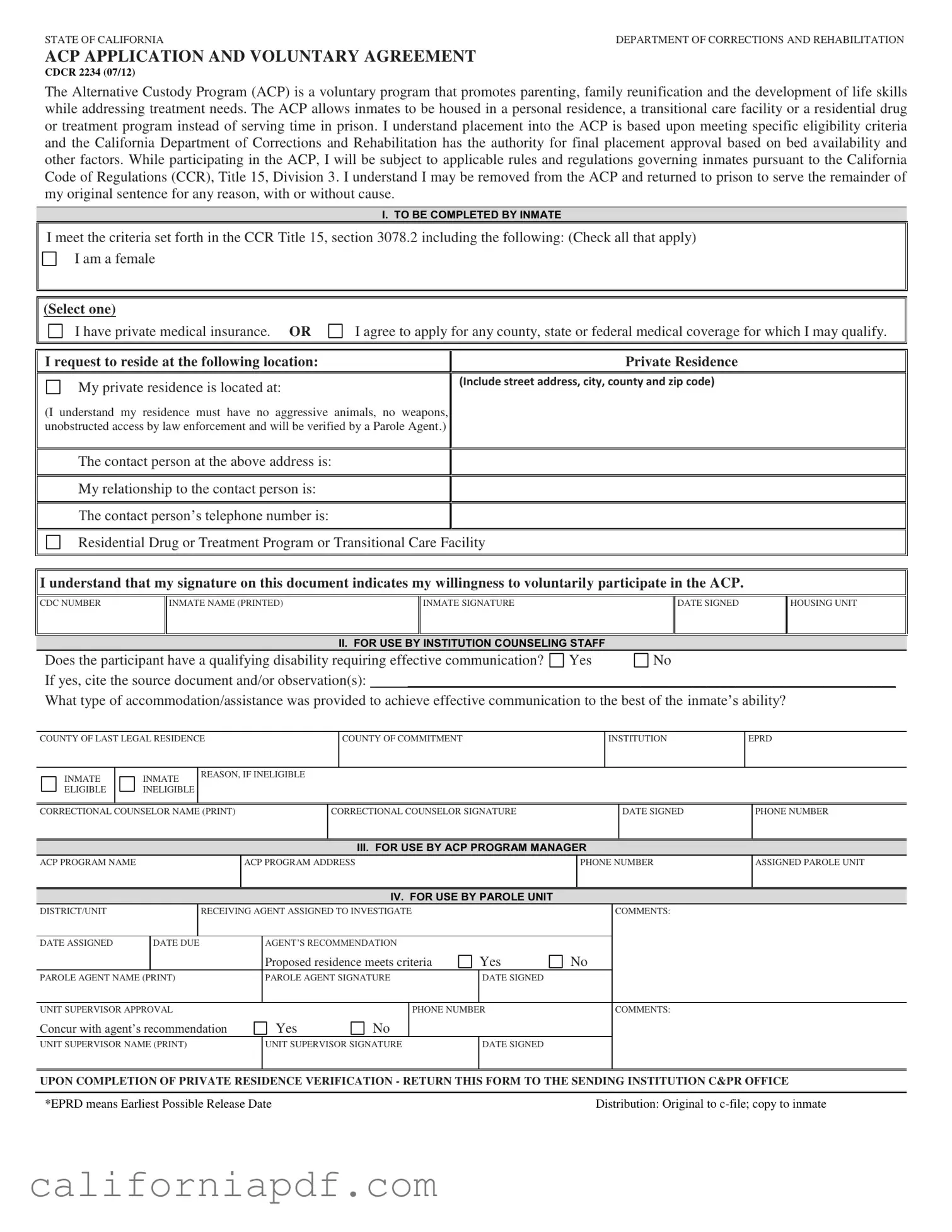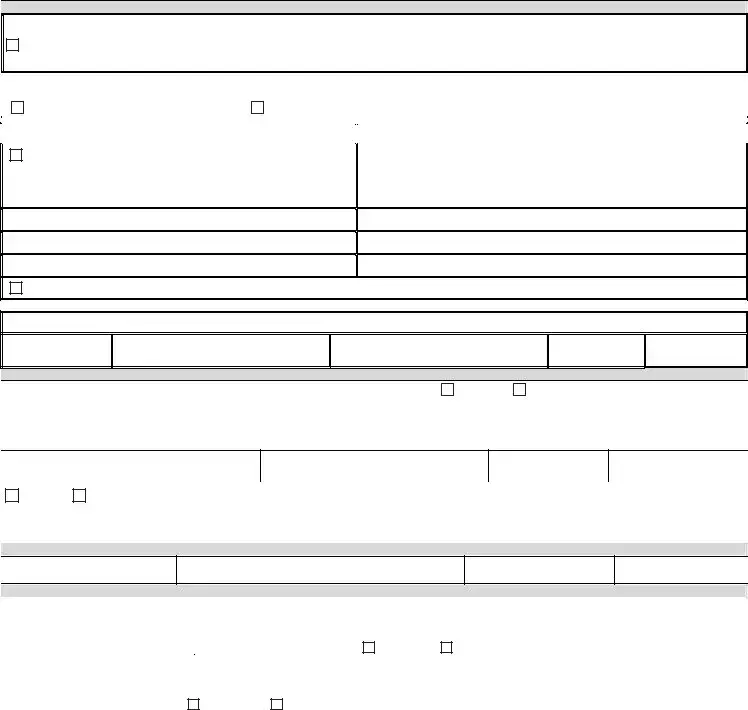What is the Alternative Custody Program (ACP) in California?
The Alternative Custody Program is a voluntary initiative designed to promote parenting, family reunification, and the development of life skills for inmates, while also addressing their treatment needs. Through this program, eligible inmates are allowed to serve their sentences in a personal residence, a transitional care facility, or a residential drug or treatment program, instead of in prison. The aim is to support inmates in a more conducive environment for rehabilitation and reintegration into society.
Who is eligible for the ACP?
Eligibility for the ACP is determined based on specific criteria outlined in the California Code of Regulations (CCR), Title 15, Section 3078.2. While details include a range of qualifications, notable eligibility requirements include being a female inmate and agreeing to apply for any available county, state, or federal medical coverage. Each applicant’s eligibility is assessed by the California Department of Corrections and Rehabilitation (CDCR), which has the final authority on enrollment into the program.
How can an inmate apply for the ACP?
Inmates wishing to participate in the ACP must complete the ACP Application and Voluntary Agreement Form (CDCR 2234). This involves providing personal information, agreeing to abide by the rules and regulations governing inmates, and selecting a preferred residence option (private residence, transitional care facility, or residential drug or treatment program). The choice of residence is subject to approval based on various criteria, including safety and law enforcement access.
What are the residence options available under the ACP?
-
Private Residence:
Inmates may request to reside in a private home, which must be free from aggressive animals, weapons, and must allow unobstructed access by law enforcement. The residence must be verified by a Parole Agent.
-
Residential Drug or Treatment Program:
Inmates can choose to be housed in a specialized facility that addresses their specific treatment needs.
-
Transitional Care Facility:
This option provides a bridge for inmates transitioning back into the community, offering support in adjusting to life outside prison.
What happens after submitting an application for ACP?
After an inmate submits the application, it undergoes a thorough review process. This includes assessments by institutional counseling staff and a Parole Agent to ensure the inmate meets eligibility criteria and the proposed residence is suitable. The inmate’s disability needs, if any, are also considered to facilitate effective communication. The CDCR has the final decision-making authority regarding placement into the ACP.
Can an inmate be removed from the ACP?
Yes, an inmate participating in the ACP can be removed from the program and returned to prison to serve the remainder of their original sentence for any reason, with or without cause. This decision can be made to ensure the safety and security of the community and the integrity of the ACP.
What support services are available to ACP participants?
Participants in the ACP have access to various support services aimed at facilitating their successful reintegration into the community. These may include, but are not limited to, medical care, counseling, job training, and education programs. The specific services available depend on the type of residence selected and the individual’s treatment needs.
What is the role of a Parole Agent in the ACP?
Parole Agents play a critical role in the ACP by conducting investigations to ensure the proposed residence meets all criteria for safety and suitability. They also provide recommendations regarding an inmate’s participation in the program and are involved in supervising inmates who have been placed in alternative custody settings.
For more detailed information about the Alternative Custody Program, interested individuals should contact the California Department of Corrections and Rehabilitation (CDCR). The CDCR provides guidance and resources for both inmates interested in the program and for their families. Information can also be found on the CDCR’s official website, which includes details on the application process, eligibility criteria, and program benefits.

